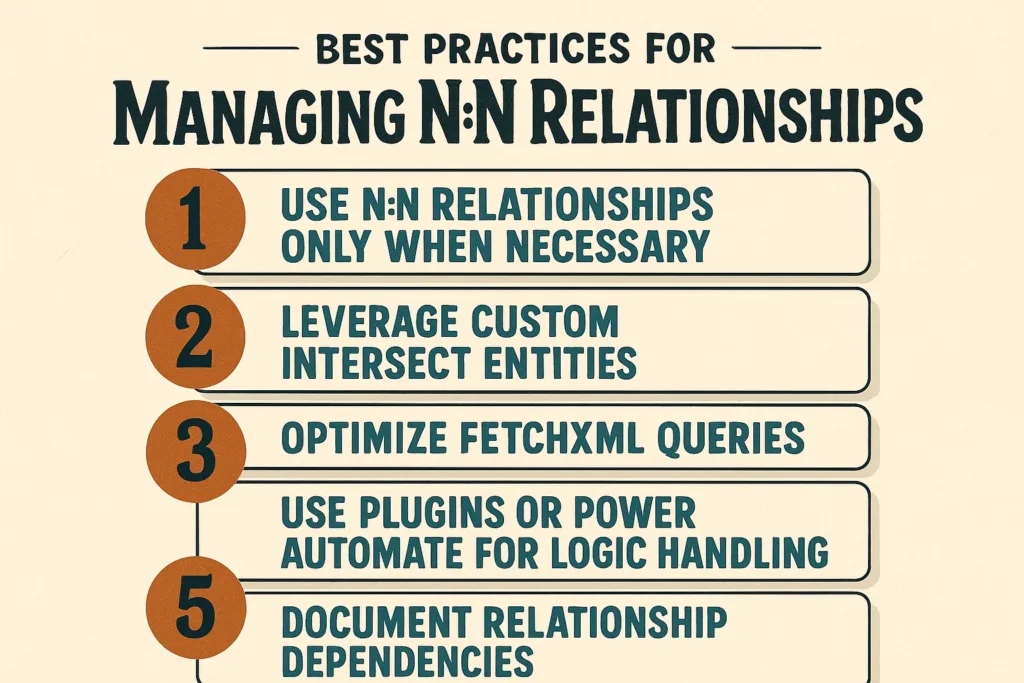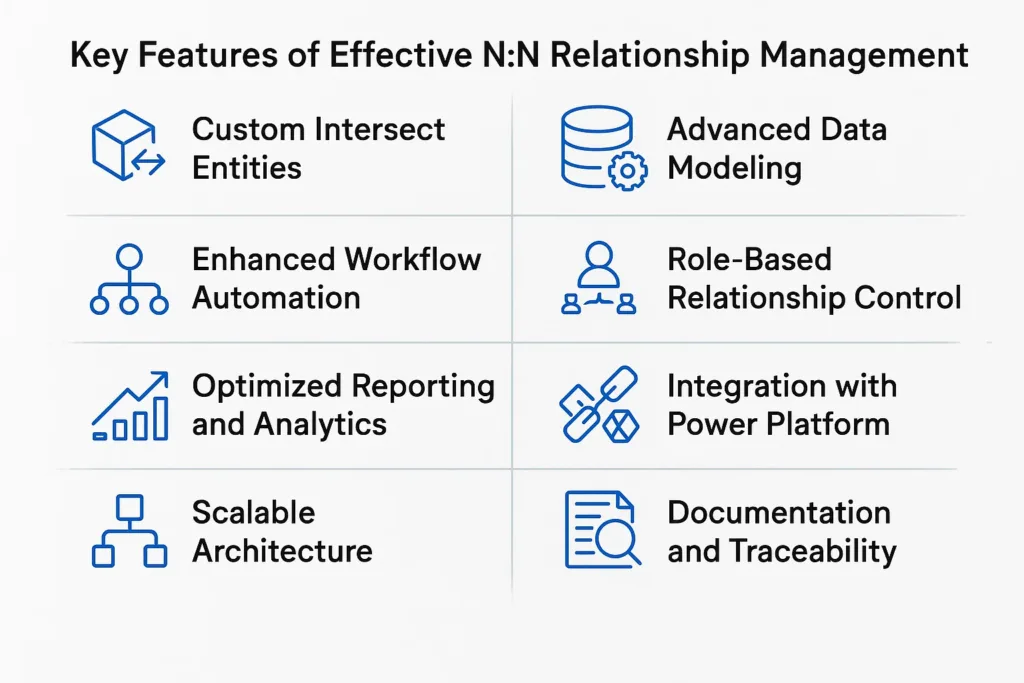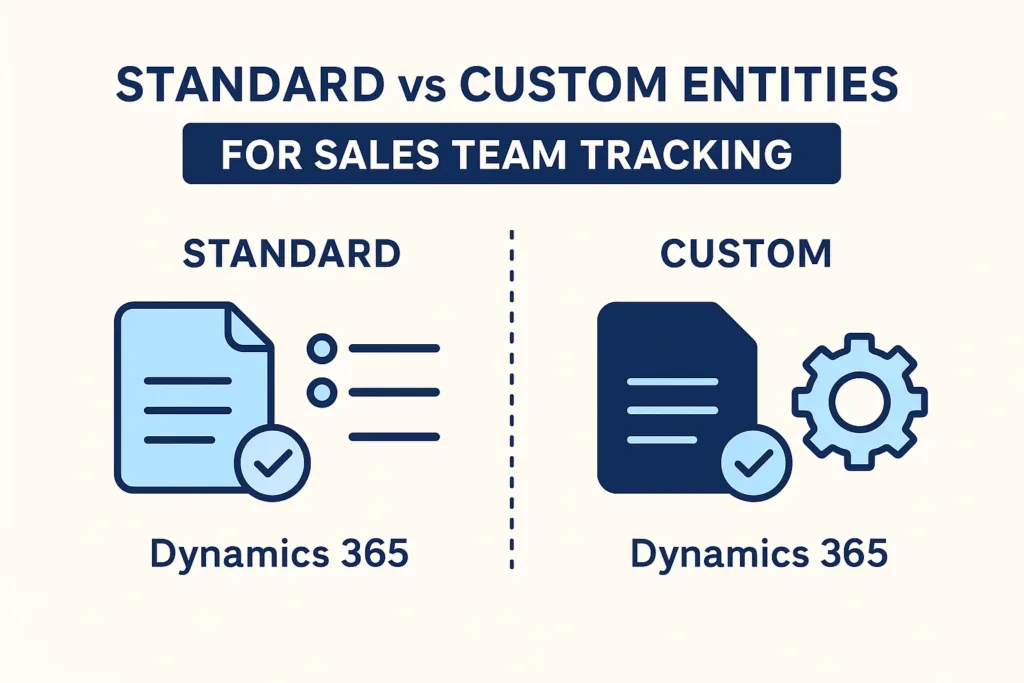Table of Content
- Introduction
- Understanding the N:N Relationship in Dynamics 365
- The Dilemma: Why N:N Relationships Can Be Problematic
- Best Practices for Managing N:N Relationships
- Alternatives to N:N Relationships
- Key Features of Effective N:N Relationship Management
- When to Use N:N Relationships
- Conclusion
- How Skysoft Connections Can Help
- FAQ’s
Introduction
Managing data relationships is at the core of effective CRM design. In Microsoft Dynamics 365, the many-to-many (N:N) relationship model allows users to link multiple records of one entity to multiple records of another. While this setup seems ideal for flexibility, it often introduces performance bottlenecks, data complexity, and maintenance challenges.
In this blog post, we’ll explore the N:N relationship dilemma, discuss its best practices, and highlight alternative strategies that ensure scalability, performance, and data clarity — all while maintaining Dynamics 365 efficiency.
Understanding the N:N Relationship in Dynamics 365
An N:N (many-to-many) relationship enables multiple entities to associate freely. For example, a student can enroll in multiple courses, and each course can have multiple students.
However, beneath the surface, these relationships rely on a junction (intersect) table that stores the associations. While this provides relational flexibility, it can become complex to query, difficult to secure, and challenging to automate within workflows or Power Automate.
The Dilemma: Why N:N Relationships Can Be Problematic
Although N:N relationships sound efficient, they can introduce several limitations:
| Challenge | Impact on System |
|---|---|
| Limited workflow automation | Cannot easily trigger actions across both related entities |
| Difficult reporting | FetchXML and Power BI integrations become cumbersome |
| Performance overhead | Large datasets slow down queries and processes |
| Security restrictions | Managing field-level access becomes complicated |
| Limited customization | Complex relationships restrict advanced business logic |
In short, while they simplify data modeling, they often complicate data management.
Best Practices for Managing N:N Relationships

To ensure optimal performance and usability, consider the following best practices:
1. Use N:N Relationships Only When Necessary
Before implementing, analyze your use case. If your scenario can work with a 1:N (one-to-many) structure, choose that instead — it simplifies automation and data retrieval.
2. Leverage Custom Intersect Entities
Instead of relying on the default system-generated relationship, create a custom intersect entity. This allows:
- Additional fields for tracking relationship details (e.g., Start Date, Status)
- Enhanced reporting and filtering capabilities
- Custom workflows and Power Automate triggers
3. Optimize FetchXML Queries
When retrieving data from multiple entities, use optimized FetchXML queries or pre-filtered views to minimize system load.
4. Use Plugins or Power Automate for Logic Handling
To handle automation between two related entities, use:
- Plugins for real-time logic
- Power Automate flows for process automation across entities
5. Document Relationship Dependencies
Always maintain technical documentation that outlines relationship dependencies and their purpose. This ensures long-term maintainability and clarity for other developers.
Alternatives to N:N Relationships
If N:N relationships lead to complexity, consider these alternative approaches:
| Alternative | Description | Use Case |
|---|---|---|
| Custom Junction Entity | Create a custom entity to store associations with added attributes. | Tracking relationships with metadata. |
| Virtual Entities | Integrate external relational data without storing it in Dynamics. | External data sources or large datasets. |
| Connection Roles | Use built-in Dynamics 365 connections to link records without formal N:N relationships. | Flexible, ad-hoc relationships between entities. |
| Hierarchical Relationships | Build a parent-child hierarchy using 1:N setups. | Organizational or product structures. |
These alternatives provide more control over automation, data integrity, and reporting performance.
Key Features of Effective N:N Relationship Management

1. Custom Intersect Entities
Create flexible junction entities that allow you to add extra fields and logic, making it easier to manage and track relationship details such as start/end dates, status, or notes.
2. Advanced Data Modeling
Design optimized data structures using 1:N or hybrid models to improve data integrity, simplify automation, and ensure faster query execution.
3. Enhanced Workflow Automation
Enable Power Automate flows or custom plugins to handle relationship-based actions seamlessly across multiple entities.
4. Role-Based Relationship Control
Apply security roles and permissions to restrict visibility and actions on relationship data, ensuring compliance and controlled data access.
5. Optimized Reporting and Analytics
Use Power BI or FetchXML queries to generate meaningful reports without overloading your CRM, ensuring performance even with large datasets.
6. Integration with Power Platform
Combine PowerApps, Power Automate, and Power BI to visualize, automate, and manage entity relationships dynamically.
7. Scalable Architecture
Design relationships that can easily evolve as your data model grows — avoiding performance degradation and maintenance challenges.
8. Documentation and Traceability
Maintain proper documentation of entity relationships, dependencies, and logic for long-term scalability and team collaboration.
When to Use N:N Relationships
While they have drawbacks, N:N relationships are still valuable in cases such as:
- Associating users with multiple teams
- Mapping skills to multiple employees
- Linking multiple vendors to products
Use them only when bidirectional flexibility is essential and performance is not significantly affected.
Conclusion
The N:N relationship dilemma in Dynamics 365 highlights a common trade-off between data flexibility and system simplicity. By applying best practices, leveraging custom intersect entities, and exploring alternatives like connection roles or virtual entities, you can design a CRM system that is both powerful and maintainable.
A well-structured data model not only enhances system performance but also ensures better user experience and automation potential.
How Skysoft Connections Can Help
At Skysoft Connections, our team of certified Dynamics 365 experts specializes in CRM architecture design, data modeling, and system optimization. We help organizations:
- Build scalable data relationships
- Optimize CRM performance and reporting
- Automate workflows using Power Automate and Plugins
- Customize Dynamics 365 for unique business needs
With over 40,000 hours of successful project experience and a 100% success rate on Upwork, Skysoft Connections ensures that your CRM ecosystem runs smoothly — without the complexity of inefficient relationships.
👉 Get in touch today to optimize your Dynamics 365 environment with best-in-class architecture and automation.
Read more : dynamics 365 security roles
FAQ’s
It’s a data structure where multiple records from one entity can relate to multiple records in another, managed through an intersect table.
They can complicate workflows, slow performance, and make reporting harder in Dynamics 365.
Using a custom junction entity or connection roles provides greater flexibility, better reporting, and easier automation.
 is a software solution company that was established in 2016. Our quality services begin with experience and end with dedication. Our directors have more than 15 years of IT experience to handle various projects successfully. Our dedicated teams are available to help our clients streamline their business processes, enhance their customer support, automate their day-to-day tasks, and provide software solutions tailored to their specific needs. We are experts in Dynamics 365 and Power Platform services, whether you need Dynamics 365 implementation, customization, integration, data migration, training, or ongoing support.
is a software solution company that was established in 2016. Our quality services begin with experience and end with dedication. Our directors have more than 15 years of IT experience to handle various projects successfully. Our dedicated teams are available to help our clients streamline their business processes, enhance their customer support, automate their day-to-day tasks, and provide software solutions tailored to their specific needs. We are experts in Dynamics 365 and Power Platform services, whether you need Dynamics 365 implementation, customization, integration, data migration, training, or ongoing support.


